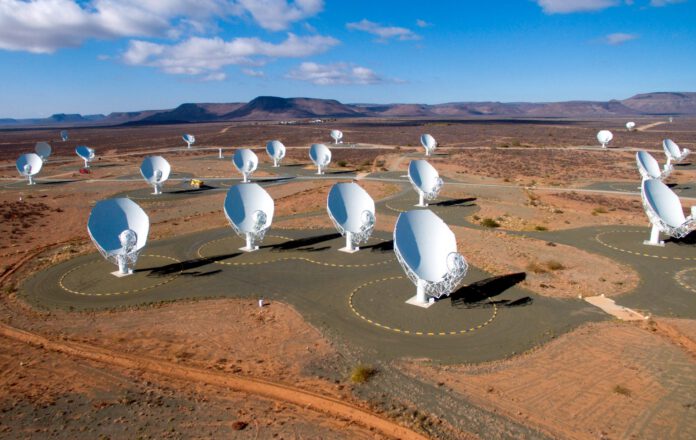
Discovery of an anomalous celestial object
Researchers, utilising a radio telescope in South Africa, have stumbled upon an object heavier than the heaviest known neutron stars, but lighter than the lightest known black holes. This intriguing revelation has caused quite a stir.
But what is this object, precisely? Scientists have been unable to provide a definitive answer, as revealed by their study published in the journal Science. But regardless of what further investigation yields, the finding is undeniably exciting.
Pulsar
Astronomers discovered the rather mysterious object in the globular star cluster NGC 1851, located approximately 40,000 light-years from earth. This globular star cluster is an enormous collection of (predominantly old) stars so densely packed that they frequently interact with each other. During observations made with the MeerKAT radio telescope, researchers discovered a pulsar, a rapidly spinning neutron star, in this star cluster. What’s more, they soon found evidence suggesting that this pulsar was not alone; there was something orbiting it.
Heaviest neutron star or lightest black hole?
Further analysis showed that the object in question had a remarkable mass; heavier than the heaviest neutron star but lighter than the lightest black hole. This raises a fascinating question. Have researchers unlocked the heaviest ever neutron star, or chanced upon the lightest black hole ever? Or, even more intriguing, have they found a variant of these celestial bodies, hitherto unknown to us?
The exact nature of this anomaly remains a mystery. Regardless, both possible conclusions hold equal excitement for astronomers and scientists. “A system consisting of a pulsar and a black hole is interesting for testing theories of gravity,” explains Researcher Ben Stappers. Moreover, a heavy neutron star could offer new insight into how matter behaves under extreme conditions, specifically compressed in tight spaces such as inside a neutron star. Colleague Arunima Dutta agrees, “We are just getting started with this system. Uncovering the true nature of this pulsar’s companion will mark a turning point in our understanding of neutron stars, black holes, and whatever else might reside in the gap between the heaviest neutron stars and the lightest black holes”.











